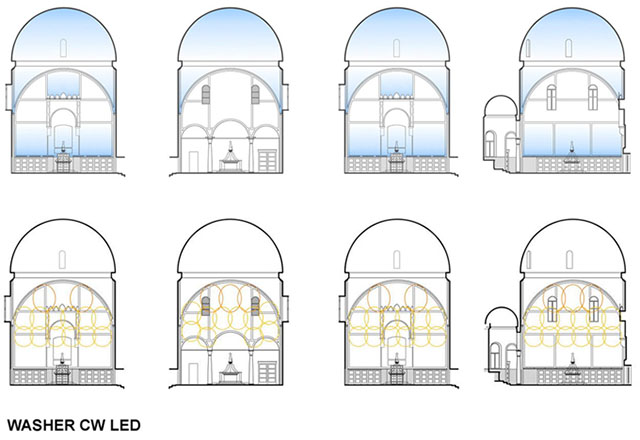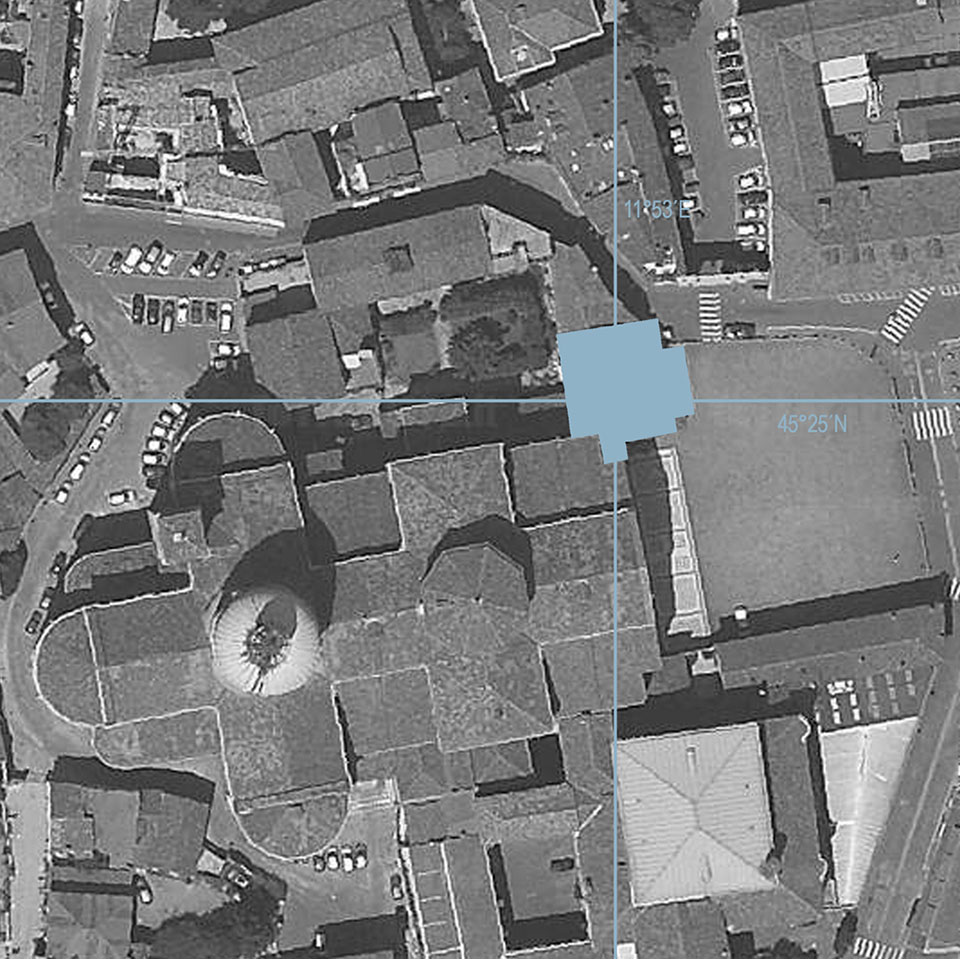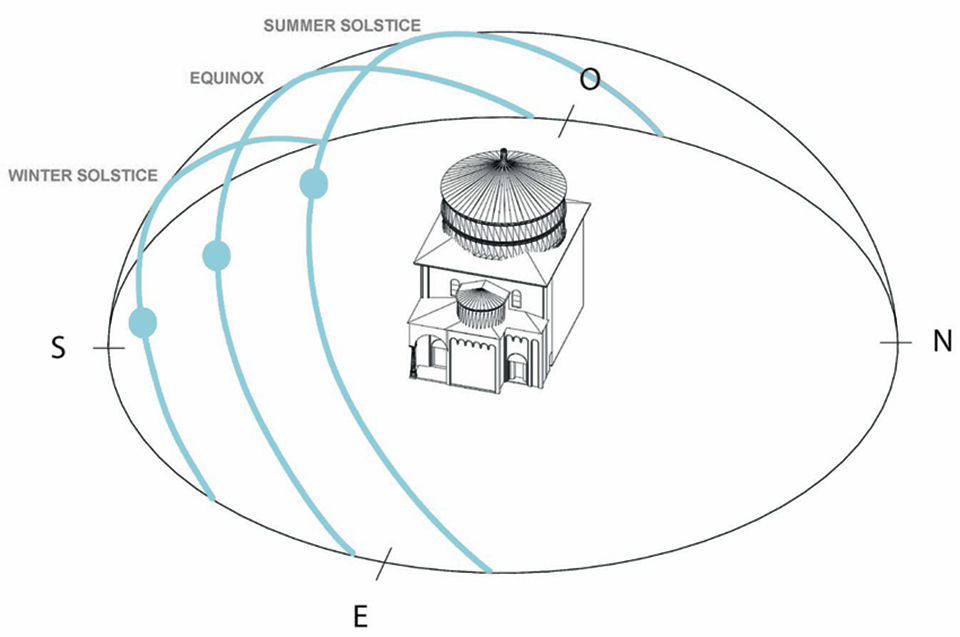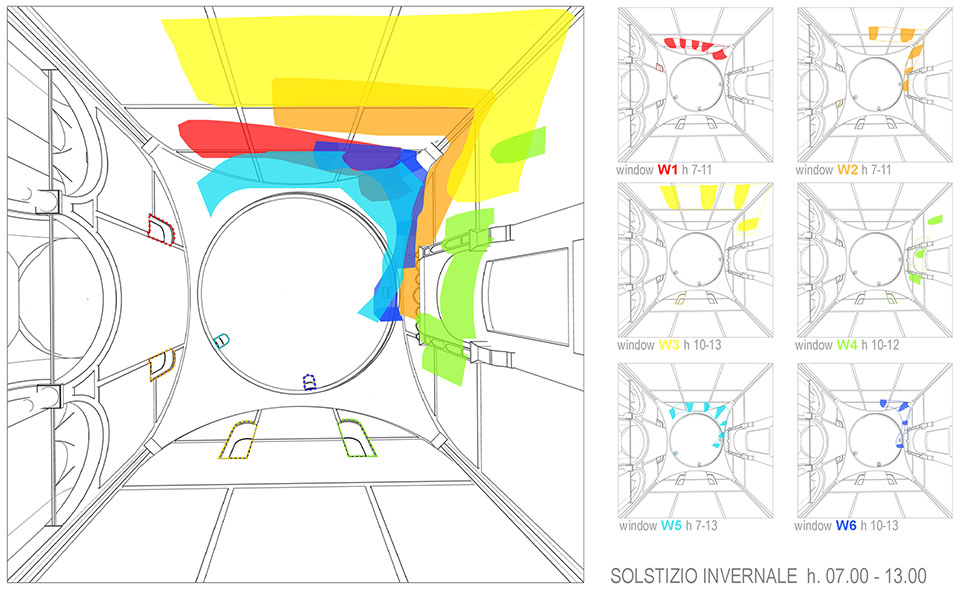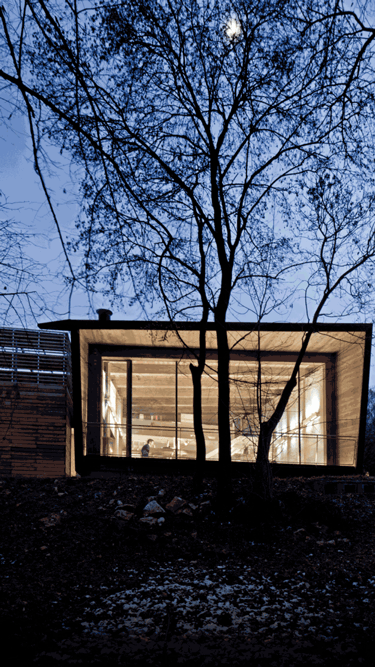battistero padova lighting
2006
padova
The frescoes of Padua Cathedral Baptistery were executed between 1376 and 1378 by Giusto de’ Menabuoi.
They were commissioned by Fina Buzzaccarini, the wife of Francesco the Old of Carrara, who wanted to be buried near her husband.
The new lighting concept for the frescoes is about the integration of the natural lighting coming from the dome windows with a colour temperature changeable artificial light.
Main characteristic of natural light is its continuous mutability of colour and intensity. The natural light colour changes with the sun altitude and with weather conditions.
This colour change modifies the perception of frescos surfaces. The overcast days with cold light exploit the characteristic bluish colours, the sun highlight the gold decoration of frescoes.
The new lighting project guarantee the standards of conservation and lighting comfort and want to exploit the characteristic frescoes colour also during the night time with the new integrated artificial lighting system.
Colour rendering performance and colour temperature range
The artificial light, positioned on the perimeter wooden base of the frescoes follows the colour temperature of artificial light.
The lighting system uses a combination of halogen light (Osram IRC dicroich lamps) and cold LED light (5500°K batwing) to maximise the colour rendering performance and colour temperature range.
The combination of the different lighting sources has been studied with an accurate spectrum analysis to simulate and integrate the natural light.
The entrance of natural light inside the Baptistery space has been simulate and mapped on solstices and equinox to control the direct light radiation and understand the integration lighting levels in different season conditions.
Screening system on dome windows has been developed to control UV radiation and direct light penetration.
client
Diocesi di Padova
design team
G. Traverso, A. Rizzotto
photo credits
traverso-vighy
